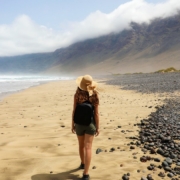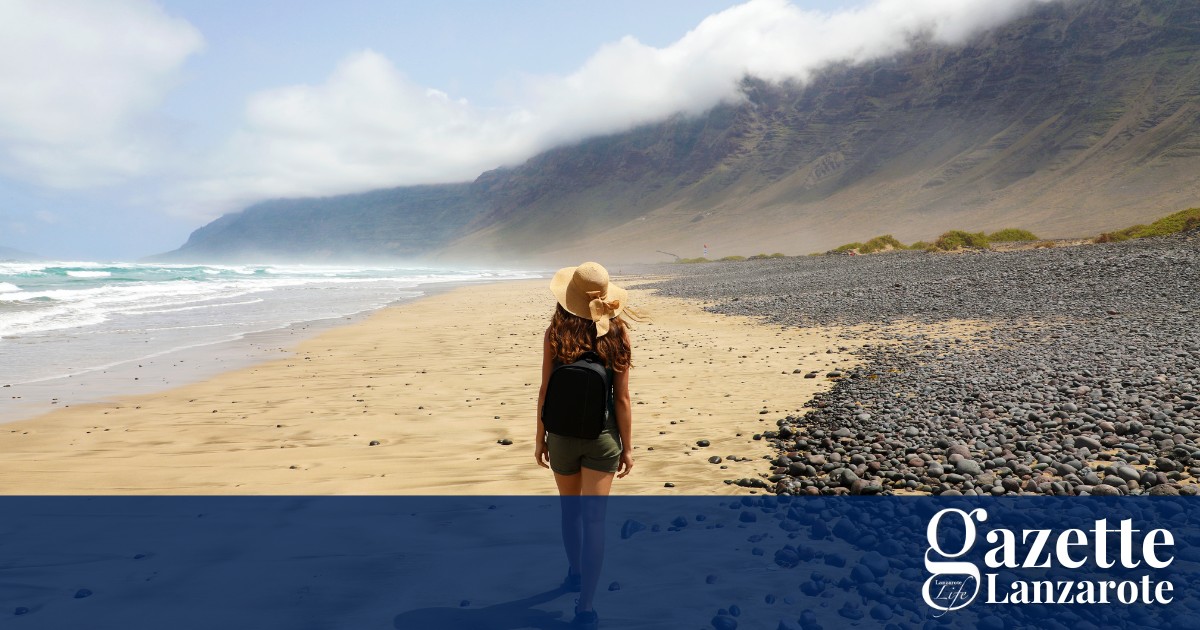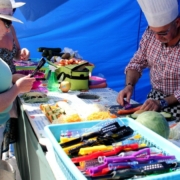As the summer season approaches its peak, Lanzarote’s beaches will be busier than ever, and with World Drowning Prevention Day on July 25th, there’s no better time to address safety matters.
The statistics for this year so far, which show just two drownings on Lanzarote by mid-June, may seem positive when the total of nine drownings on the island last year is taken into account. But these figures are too small to reflect any positive trends, and every death is one too many.
The Canary Islands, surrounded by sea and visited by millions of tourists a year, saw 72 drownings last year, more than twice as many victims as were caused by road accidents. Campaign groups such as Canarias: 1500 Km de Costa point out that Spain spends €90 million each year on road traffic accident prevention, but nothing on water safety.
Sebastián Quintana, who founded the campaign, calls drowning “the silent tragedy” pointing out that while road accidents receive wide coverage, with photos of destroyed cars and injured victims, drownings leave no trace and near-drownings are rarely reported.
75% of drownings on the Canaries are of men, and the profile of the most likely victim is a foreign male aged over 60 bathing at a beach on a summer afternoon, a description which clearly applies to many tourists.
Nevertheless, drowning incidents happen to victims of both sexes and all ages and nationalities. They occur in swimming pools, piers and rocky coasts as well as on beaches, and victims can be fishermen and scuba divers, as well as bathers. Migrant drownings, including the tragic deaths of seven women and girls at El Hierro in May, are not included in official figures.
Quintana says that information and education is as important as lifesaving services, and believes that, alongside official safety campaigns, hotels and holiday rentals should do more to inform tourists about water safety.
This includes explaining the flag system on beaches, and raising awareness of weather warnings issued by AEMET or local authorities. At least two recent drowning victims on Lanzarote were foreign tourists who may not have been aware that rough sea warnings were in place.
Drownings of children are, thankfully, very rare but usually occur in swimming pools where parental supervision is absent.
The Canarian motto is simply “Ocean”, reflecting the fundamental importance of the sea to the islands. It also reflects the immense respect that should be given to those wonderful waters.
WATER WISDOM
Our advice for staying safe in and around water on Lanzarote. BEACHES AND COASTS • Pay attention to warning flags on flagged beaches:
• Green: Bathing conditions are safe. Normal precautions should still be taken, but there is nothing out of the ordinary to worry about.
• Yellow: Bathers should be cautious. Swimming is permitted but bathers are advised to pay attention to lifeguards, take special care of children and not go out of their depth.
• Red: Swimming is dangerous and not advised. On some Canarian beaches, swimmers can be fined for bathing while a red flag is flying, although this is not the case on Lanzarote yet. On Famara, a red flag is permanently hoisted.
• Check for weather warnings at www.aemet.es/en/ We also publish warnings at www.gazettelife. com.
• On Lanzarote, think twice about bathing in most areas on the north and east coasts. Apart from a few protected places such as the lagoon at La Santa or Caletón Blanco, the entire coast from Playa Blanca to Arrieta has unpredictable and frequently very dangerous bathing conditions.
• Swim with a partner if possible.
• Take extra care on unflagged beaches, especially if you do not know them. Extreme caution is always the best approach.
• Stay well clear of buoys and roped off areas Do not swim too close to rocks
• If swimming in open water, keep a constant look-out for boats or other craft. Regular open water swimmers should get a signal safety buoy.
• Don’t swim when drunk or under the influence of drugs. You can go after eating a light meal, though – the warnings against this are old wives’ tales.
• If you use a beach regularly, find out where lifesaving equipment such as floats and defibrillators is located. Walkers should stay on coastal paths and avoid wet rocks at the sea’s edge. Stick to dry rocks and be aware that rocks can be extremely slippery below the tideline. If wading near rocks, watch out for sea urchins. The only other animal that may bother you is a jellyfish, but they are rarely seen in large numbers.
POOLS
• Supervise children at all times.
• Discourage horseplay and running around.
• Avoid bathing after drinking.
• Follow the pool rules at all times.
• Pool owners should ensure pools are safely covered when not in use.











Leave a Reply
Want to join the discussion?Feel free to contribute!